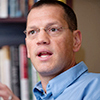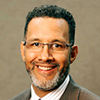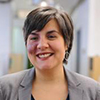The holiday season is the best time of year to reflect. To that end, we asked a few of the most interesting people in education to do just that: Tell us what they consider the most significant development in education this year, and predict the likely impact of that development in the year ahead.
We chose to highlight voices that have been particularly influential to us this year. From Common Core to teacher training, innovations among charter schools and the dreary new round of results on international PISA exams, our contributors raise important questions about progress and challenges in 2013—and offer wisdom and an ambitious agenda for 2014. We thank each of them for their thoughts, and all of you for reading. See you in January.
Our contributors:
Kati Haycock, The Education Trust
Segun Eubanks, National Education Association
Jay Mathews, the Washington Post
James Wyckoff, University of Virginia
Neerav Kingsland, New Schools for New Orleans
Andy Smarick, Bellwether Education Partners
Elisa Villanueva Beard, Teach For America
Michael Goldstein, Bridge International Academies
Julie Jackson, Uncommon Schools
Kati Haycock, Founder and President, The Education Trust.
Nothing is less controversial in education than the idea that low-income students deserve access to great schools. And yet conviction is rarely matched by action. Kati Haycock refuses to let anyone off the hook when they miss a chance to set things right, including her allies. This is one reason we admire her so much. As a TNTP board member and one of the folks who helped build our organization, she is still the first to tell us when we’ve lost our minds. We’ll be making a resolution to do that less often in 2014. She’ll keep score.
 When Ted Olson signed on to take the big California marriage equality case to the Supreme Court, most of the attention focused on the oddity of this former Reagan/Bush official—perhaps most widely known for winning Bush v. Gore and leading the assault on the use of race in college admissions—standing up for marriage equality. What people missed was the potential of this effort to tip the entire country in a different direction.
When Ted Olson signed on to take the big California marriage equality case to the Supreme Court, most of the attention focused on the oddity of this former Reagan/Bush official—perhaps most widely known for winning Bush v. Gore and leading the assault on the use of race in college admissions—standing up for marriage equality. What people missed was the potential of this effort to tip the entire country in a different direction.
So, too, I think with the latest from Mr. Olson: the lawsuit Vergara v. California, which argues that California’s current teacher policies—including LIFO, tenure, and dismissal policies—deny Latino and black children their equal rights under the state constitution to a quality education.
Like many other states, California has stacked the teaching deck against low-income students and students of color for decades. No matter how you define teacher quality—experience, appropriate subject matter certification, or effectiveness—such students get more than their fair share of the weakest teachers and less than their fair share of the best. But before this, most everybody just looked the other way.
This case will be heard in Los Angeles Superior Court, beginning on January 27. But it likely won’t be resolved there. No matter which way the trial court judge goes, there will be appeals filed all the way up to the state Supreme Court.
While there may be no final decision in this case during 2014, I’m willing to bet that there will begin to be some activity around equitable access to strong teachers, as districts around the country begin to assess their vulnerability to legal challenges. If we’re lucky, we may be able to get more honest data out there into public view.
Finally, we’ve got an 11-year-old federal law on this subject that has never been enforced. And the moral arguments have mostly fallen on deaf ears. So maybe, one day, just as folks are already looking back on the California marriage case as the act that finally turned the tide on marriage fairness, we’ll look back on this case as the moment the tide turned toward fairness in education.
Doug Lemov, Managing Director at Uncommon Schools and author of Teach Like a Champion.
I never miss one of Doug’s blog posts. Whether he is swooning over outstanding teacher practice he observed on a school visit or discussing how he reads with his own children, I know I am going to learn something valuable. In the past two years, Doug and his team at Uncommon have profoundly influenced how we train teachers at TNTP. They really are as good as it gets.
 Quieter in terms of Sturm und Drang than the Common Core, the most significant development in 2013 has arguably been the steady rise in the importance afforded to the conversation about teacher training. Teaching is the most important job in our society, and it’s one of the hardest. The most important question we can ask is: How do we get better at it, all of us, every day, throughout our careers? And how do we build a profession that embraces the pleasure of getting better? How do we set people up to succeed, so they do the work of teaching happily and for a long time?
Quieter in terms of Sturm und Drang than the Common Core, the most significant development in 2013 has arguably been the steady rise in the importance afforded to the conversation about teacher training. Teaching is the most important job in our society, and it’s one of the hardest. The most important question we can ask is: How do we get better at it, all of us, every day, throughout our careers? And how do we build a profession that embraces the pleasure of getting better? How do we set people up to succeed, so they do the work of teaching happily and for a long time?
In particular, TNTP’s continual quest to understand what makes teachers better and how they learn has been a critical contribution. So has NCTQ’s push to use data to assess schools of education.
Breakthroughs in innovation have historically been preceded by breakthroughs in measurement, so I’m optimistic that bringing the assessment conversation to training will accelerate changes, both disruptive (such as TNTP, RELAY GSE, and so forth) and within existing programs. We all believe strongly in honoring students by providing them with access to great teaching. We now see that as a right. I think and hope 2014 will be the year we start honoring teachers—at every point in the arc of their careers—in the same way.
Segun Eubanks, Director, Teacher Quality Department, National Education Association.
Segun has long enjoyed a reputation as a national policy expert who can engage with peers across a broad ideological spectrum. When we do a research project here at TNTP, we make a point of seeking his input. It is always astute. This year, Segun stepped into the spotlight as the new chairman of the Prince George’s County school board. Such is his credibility that management felt they needed a union guy to get things straightened out.
 Perhaps one of the most significant developments in 2013 has been the combined effect of three seismic shifts in education: First, the implementation of Common Core State Standards designed to ensure that American students learn at levels that at least begin to compete with students around the world; second, the introduction of new tests based on these standards that are supposed to assess higher-order thinking and be significantly better than the current narrow tests being used to assess school, student and educator performance; and third, new teacher evaluation systems that promise to measure teachers’ actual impact on student learning.
Perhaps one of the most significant developments in 2013 has been the combined effect of three seismic shifts in education: First, the implementation of Common Core State Standards designed to ensure that American students learn at levels that at least begin to compete with students around the world; second, the introduction of new tests based on these standards that are supposed to assess higher-order thinking and be significantly better than the current narrow tests being used to assess school, student and educator performance; and third, new teacher evaluation systems that promise to measure teachers’ actual impact on student learning.
While each of these reforms individually has been significant, their combined effect on schools, teachers and students has led to a compelling mix of hope, challenge, doubt, frustration and uncertainty.
Given that uncertainty, it is not easy to predict the impact of this development. Several states put the brakes on their involvement in field-testing the new exams, and the Common Core “backlash” seems to be growing. The education community must do a better job of communicating the value of Common Core standards separately from the issues of standardized testing and how data from these tests can and should be used.
Early in the teacher evaluation movement, there was an almost exclusive emphasis on getting rid of bad teachers using student test score data. Through the activism and engagement of teachers, policymakers are starting to recognize that systems must focus more broadly and appropriately on improving the practice of all teachers. If teachers and other educators can be more centrally engaged in leading the implementation of the new standards and the development and deployment of high-quality assessments, we might just see the significant advances in student learning and equity that we seek. My guess is that if we meaningfully engage educators and parents more thoughtfully throughout the entire process, ensure fidelity in the implementation processes and slow down enough to make sure we are getting this right, we have a good chance to succeed.
Jay Mathews, Education columnist, the Washington Post.
Every field has its luminaries, but rarely can one person make a definitive claim to that role. But Jay Mathews is the definitive education journalist. As an author and columnist, he has been the most consistent and authoritative voice in education media over the past few decades. I find this all the more fascinating because he doesn’t do it through bombast. No one is more ready to announce he was incorrect about a prior opinion. No one else sends previews of columns and invites criticism and correction. It’s part of what makes him worth listening to.
 It is hard to identify most significant developments in education. Singular moments like the passing of the GI Bill or the deciding of Brown v. Board of Education don’t happen often.
It is hard to identify most significant developments in education. Singular moments like the passing of the GI Bill or the deciding of Brown v. Board of Education don’t happen often.
I think we will look back on this year as the one in which the most imaginative and energetic parts of the charter school movement reached a critical mass, with the best schools and educators in that group working together to create environments that will nurture creativity and teamwork all over the country. You see that in Tennessee, in Colorado, in New York, in New Jersey, in Massachusetts, in Colorado, in Florida, in D.C., in California and many other places. In 2014, we will begin to accept that movement as the one that took us further than we ever imagined.
James H. Wyckoff, Director, Center on Education Policy and Workforce Competitiveness, University of Virginia.
The most popular words in education might be “research shows…” If you have consumed education research in the past decade, you have probably read something by Jim Wyckoff. With diverse collaborators over the years, Jim has written about how teachers tend to take jobs close to where they grew up and how teachers from different preparation pathways compare. In 2013, he became the first researcher to publish an academic paper on Washington, D.C.’s IMPACT evaluation system. It was one of those big deals, showing that teachers are improving over time and that higher performers are being retained more often than lower performers. I make time to read everything that Jim publishes.
 Complaints of education reform seem to have increased during 2013. Some of the criticisms of accountability, charter schools and teacher evaluation policies reflected frustration over implementation weaknesses. Each of these policies embodied substantial change, and in some cases implementation was rushed with the inevitable pushback. This is not unexpected, and effective policymakers and practitioners responded to these criticisms by making a variety of adjustments.
Complaints of education reform seem to have increased during 2013. Some of the criticisms of accountability, charter schools and teacher evaluation policies reflected frustration over implementation weaknesses. Each of these policies embodied substantial change, and in some cases implementation was rushed with the inevitable pushback. This is not unexpected, and effective policymakers and practitioners responded to these criticisms by making a variety of adjustments.
More surprising, and for me more troublesome, was the increasing traction that challenges to the core principles of these policies received in 2013. Some of challenges were embodied in election outcomes and legislative rollback of reform. Others embraced a false nostalgia that suggested schools with large percentages of poor and non-white students were generally providing a better education prior to 2000. There is ample evidence this was not the case.
I find this troublesome, not because we have a strong body of evidence of the efficacy of recent reform policies, but precisely because we know so little about their effects. In this regard, 2014 will be telling. Superintendents, principals and teachers around the country have designed thoughtful policy on the core principles of education reform. Abandoning these efforts prematurely, without good evidence, would be a huge disservice to current and future students. Will we stay the course to understand whether and under what conditions various elements of these reforms improve student outcomes? I am optimistic that we will, but some events of 2013 give me pause.
Celine Coggins, founder and CEO, Teach Plus.
In the space of a few years, Celine has grown Teach Plus into a national voice for the future of the teaching profession. Everyone says teachers should be engaged in policy. She makes it happen in a growing number of major urban areas. Teach Plus is especially skilled at harnessing the energy of younger teachers who want teaching to be a job worth keeping for the long term. Given the retrenchment of the AFT this year into policy positions that cater to near-retirement hard-liners, it is reasonable to ask whether Celine will have more influence over the future of teaching than Randi Weingarten.
 Teaching is in the throes of a profound transformation—from a seniority-driven profession to a performance-driven profession. As with all transformations, the path of progress is not linear.
Teaching is in the throes of a profound transformation—from a seniority-driven profession to a performance-driven profession. As with all transformations, the path of progress is not linear.
This past year represented an important bump in the forward momentum that had grown steadily since the elections of 2008.A performance-based system for teachers relies, in part, on having a credible way to measure the degree to which students are learning in a given classroom. That is, it relies on good assessments. Many states and districts designed new teacher evaluation systems planning to ultimately insert new Common Core-aligned assessments (PARCC and SBAC) as they became available for the 2014-15 school year. As the launch date for these tests has neared, myriad challenges arose in 2013:
- The standards on which the assessments are based are demanding and different, leaving teachers and parents concerned about likely short-term test score drops.
- The tests are now projected to be more expensive than originally planned.
- Several states dropped plans to use the tests.
- The formative components of the tests (so valuable to teachers for tracking student growth) have been de-prioritized as extras available only for added cost.
More broadly, resistance to testing and accountability has intensified—from teacher testing boycotts in Seattle early in the year to the National Day of Action in December. School year 2014-15, once seen as the panacea date by which testing debates would come to rest, seems unlikely to live up to that aspiration.
For those of us who care deeply about building a profession that better serves students, 2014 will be the critical year for getting testing right. As the next generation of assessments comes to life, the bumps will most certainly continue. How can we help to pave a smooth road through the transition? A key piece of the puzzle is drawing public attention to examples of the tremendous progress made by students in systems that focus heavily on developing and evaluating teachers, like Memphis and Washington, D.C.
More important, perhaps, is listening to teachers and addressing some of the concerns that have led us to this volatile point. In national surveying, we at Teach Plus have learned that the vast majority of teachers are supportive of having part of their evaluation based on student growth. However, we also hear concerns. The principle concerns teachers voice—a desire to get test data returned more quickly, aligned professional development and the need to streamline testing in certain grades and subjects— are legitimate and have the potential to be addressed as the next generation of assessments comes online. My hope for the new year is that we get back on track in building a system that retains, develops and rewards teachers for succeeding with students.
Neerav Kingsland, CEO, New Schools for New Orleans.
Seven years after Hurricane Katrina, the rebirth and steady upward trajectory of New Orleans schools is becoming a key educational storyline of the millennium—but far too often, observers dismiss the lessons of New Orleans as irrelevant to other places. Enter Neerav Kingsland. He is the passionate, patient, persuasive ambassador for New Orleans to the wider educational world. Neerav’s case for relinquishing authority to the school level has sharpened debates nationwide. We at TNTP love the way Neerav has staked out a clear position and engaged with anybody who wants to debate with him.
 Here is something significant that has not really hit the national presses: the Recovery School District has publicly announced that, by 2015, it will no longer directly operate schools in New Orleans. When this occurs, the RSD will have reinvented the role of government in public education: It will have handed power back to educators by letting them form non-profits to operate schools; it will have handed back power to families by letting them choose among the schools; and it will have assumed the role of public steward by monitoring the nonprofit-run schools for performance and equity. A completely new American model for public education will be realized. This is extremely significant.
Here is something significant that has not really hit the national presses: the Recovery School District has publicly announced that, by 2015, it will no longer directly operate schools in New Orleans. When this occurs, the RSD will have reinvented the role of government in public education: It will have handed power back to educators by letting them form non-profits to operate schools; it will have handed back power to families by letting them choose among the schools; and it will have assumed the role of public steward by monitoring the nonprofit-run schools for performance and equity. A completely new American model for public education will be realized. This is extremely significant.
What will be the likely impact of this development for 2014? Not much. In New Orleans, 91 percent of students already attend schools operated by nonprofit organizations, so getting to 100 percent will not dramatically change the system. Will other cities feel the impact of reforms in New Orleans? Perhaps one or two—but I don’t think many will. So, in 2014, the impact of this development will be minimal.
This may be in part because of prudence. New Orleans is only one city, and other cities may wait to see multiple proof points before adopting a new model for public education. This is a reasonable line of thinking. But, to be honest, I don’t think this is why most cities will maintain their current structures. Rather, I think most cities will stay the course because they are led by politicians and superintendents who believe that, for their city, this time is different: This time, they have finally found the right leader to turn things around; this time, they have finally identified the right strategies to make their schools great; this time, they have the developed the right technocratic policies to incent the behavior they want to see. Will these leaders be correct? I am very skeptical.
Andy Smarick, Partner at Bellwether Education Partners and Senior Policy Fellow at the Thomas B. Fordham Institute.
Education debates are often tribal. Participants choose positions based on whether they are shared by friends rather than truly convincing. It’s difficult to find folks who aren’t afraid to cut against the grain. Andy Smarick is the anti-tribalist. Is that a term? He is a conservative who’s skeptical that big districts can be fixed, but he’s also a champion for some district-wide reforms. We like Andy even when we’re on the receiving end of his spirited inquiry.
 I think there were two major developments in 2013.The first is that modern education reform, which apart from accountability systems has been primarily an urban-focused enterprise, expanded geographically…and we weren’t prepared for the consequences. By, say, 2009, we’d reached somewhat of a political and policy equilibrium; yes, there were arguments about K-12 schooling, but they were familiar. The battle lines were well mapped. But when charters started popping up in suburban communities, teacher evaluation systems went statewide, international tests showed our highest-performing kids weren’t competitive with their peers in other countries and Common Core and common assessments threatened to alter what all kids were to learn and how they’d be tested, the equilibrium ended. More players entered the debate, different coalitions emerged, and new fronts opened.
I think there were two major developments in 2013.The first is that modern education reform, which apart from accountability systems has been primarily an urban-focused enterprise, expanded geographically…and we weren’t prepared for the consequences. By, say, 2009, we’d reached somewhat of a political and policy equilibrium; yes, there were arguments about K-12 schooling, but they were familiar. The battle lines were well mapped. But when charters started popping up in suburban communities, teacher evaluation systems went statewide, international tests showed our highest-performing kids weren’t competitive with their peers in other countries and Common Core and common assessments threatened to alter what all kids were to learn and how they’d be tested, the equilibrium ended. More players entered the debate, different coalitions emerged, and new fronts opened.
The second development was epitomized by NAPCS’s announcement that Detroit is now a charter-majority city; 51 percent of public school kids in the Motor City are today educated in charters. It is now harder and harder to say that New Orleans is an outlier because of Katrina. Washington, D.C. may be majority charter next year, and Kansas City isn’t far behind. The point is that the urban district, which has failed so many kids for so long, is dispensable. When you combine this with the recent CREDO studies showing that the charter sectors in Boston, NOLA, Detroit, Indianapolis, Newark and New York City are all outperforming their respective districts significantly, you can’t help but realize that we’re on the brink of a fundamental change in the delivery of urban public schooling.
In 2014, regarding the expansion of modern ed reform, I fear that the promise of many reforms won’t be fully realized. The Common Core backlash will grow, the number of states participating in the testing consortia will continue to shrink, implementation of educator evaluations (and their consequences) will be slowed, and so on.
If we’re to head this off and recapture statewide education reform momentum, two related things have to occur. First, we need strong reform-oriented governors and state chiefs. Gubernatorial elections in 2014 will be key. Also important will be the next wave of state superintendents; I suspect many of the best chiefs from the Race to the Top era will move on to other things in 2014. Who replaces them is a critical question.
Second, the leading education reform organizations must become more politically diverse—their left-leaning bias has become a major liability. There are lots of Republicans and conservatives in suburbia, in exurbia, in rural areas. If our organizations don’t reflect that, they won’t understand the politics and they won’t be trusted. For example, the reform community’s response to the Common Core backlash would have been much more effective had our leading groups been more politically diverse. Instead of understanding what was happening, we disparagingly dismissed it all as Tea-Party craziness, which made things worse. I worry that this phenomenon will materialize in other forms because our field hasn’t internalized this problem.
Regarding the revolutionary changes in urban schooling, we should look for three things. First, how will policymakers respond? Will they hasten the transition to a new system of schools by creating more RSDs and thoughtfully winding down districts, or will the evolution be gradual, and in some cases painful, as urban districts approach bankruptcy? Second, we’re going to see more and better “ecosystem” organizations, nonprofit groups that do more as the district starts to atrophy. For example, New Schools for New Orleans, The Mind Trust in Indianapolis, the Philadelphia School Partnership and other “harbormaster” members of CEE-Trust are going to take on a larger role by coordinating human capital activities, incubating and replicating schools, advocating for better policies and more.
Finally, we’ll have to see how first-generation reform organizations respond to the decline of the district. Lots of groups were designed to help the urban district, and they’ve built beliefs, habits, practices and financial models around it. Will these groups be able to make the transition to the new world and, even better, help facilitate that transition? Or will they be unable to respond—like most dominant organizations presented with a disruptive change—and be eclipsed by new organizations? What happens in 2014 will tell us a great deal about all three issues.
Elisa Villanueva Beard, co-CEO, Teach for America.
One of the most significant developments in the education space this year, to me, was the leadership succession at Teach For America. After more than 20 years of building TFA into the most influential nonprofit organization of this generation, Wendy Kopp handed the reins to Matt Kramer and Elisa. I think the world of them both. Elisa is especially worth highlighting because she served as a corps member and grew up in a community that has long been served by TFA. We expect her voice to become increasingly powerful in debates to come.
 In 2013, the Deferred Action for Childhood Arrivals (DACA) order changed our country for the better. It is a stopgap measure for the stronger DREAM Act, but it gives children of immigrants a better shot at reaching the potential their teachers and parents see in them each day.
In 2013, the Deferred Action for Childhood Arrivals (DACA) order changed our country for the better. It is a stopgap measure for the stronger DREAM Act, but it gives children of immigrants a better shot at reaching the potential their teachers and parents see in them each day.
This issue is personal to me—not just as a second-generation American, but as an educator. When I taught, all of the students in my class had immense potential, but only some of them had the documentation to share that potential in our nation. At 6 and 7 years old, my students didn’t fully understand the uncertainty of their futures—but later on, they fully felt the heartbreak of losing the chance to give back to the country they love. A country they call home. A country they would fight for. I felt that heartbreak with them, and I see the DACA as a step in the right direction of unleashing incredible talent like theirs. The character, persistence, hard work and discipline of many of our DREAMers will bring new ideas, innovation, and economic prosperity for our nation.
The impact of DACA, and hopefully, the passage of the DREAM Act, will play out over many years to come, but in 2014, we can look forward to more young people working with increased confidence to become our nation’s future leaders. I am proud to say that in 2013 we have two DACA corps members at Teach For America, and have a goal of bringing in 30 corps members for the fall of 2014, and 60 by 2015. It is clear to me that this is not just an issue of citizenship or education; it is an issue of rights and an issue of justice. It is a vote of confidence in the possibility of this country to be greater than ever before. Through DACA, more young people can contribute to that greatness; with their strength, our nation’s future is bright and our opportunities unyielding.
Michael Goldstein, Chief Academic Officer of the Bridge International Academies, and founder of the original MATCH Charter School and Teacher Residency.
It’s popular in education to talk about scale. Not everyone is willing to do what it takes to achieve scale, though. This year, Mike Goldstein plunged headlong into it by becoming the CAO of Bridge International Academies, which educates almost 50,000 students in developing countries. Nobody is better suited to the task. If you’ve read Mike’s blog over the years, you know he astounds you with his smarts while peppering you with humor and self-deprecation. Keep an eye on Bridge.
 Abroad, innovations like WorldReader is promising. Alas, 2013 was quiet in American K-12. At the district level, teacher evaluation was mostly coopted and toothless. There were slight gains for charter schools, vouchers and education school reform. But only paralysis won big in many places.
Abroad, innovations like WorldReader is promising. Alas, 2013 was quiet in American K-12. At the district level, teacher evaluation was mostly coopted and toothless. There were slight gains for charter schools, vouchers and education school reform. But only paralysis won big in many places.
Perhaps the Red Sox winning the 2013 World Series and shocking the baseball establishment is a big development. I see three themes. One, they got rid of some talented complainers on their team, and added effective players who doubled as “good character guys.” Two, they leaned heavily on quantitative analysis. Three is an oldie-but-goodie: There’s no substitute for good pitching.
A handful of outlier, high-performing charters in 2013 seem to be modifying to follow the Sox approach. Those charters already had the first and second themes nailed: Use data, build a team of teachers and factor in “chemistry.” But while there’s no substitute for good curriculum, that’s historically been a weaker point for these schools. I see a few 2013 signals that already high-flying charters will make some breakthroughs in curriculum (in part instigated by Common Core), implement big changes in 2014, and thereby vault further past the more static typical charters.
Amanda Ripley, Emerson Senior Fellow at the New America Foundation, author of The Smartest Kids in the World.
Last year was a banner year for Amanda. In August, she released her much-anticipated book looking at how American schools differ from their counterparts in higher-performing countries. It quickly became a hot seller. Apparently she is also clairvoyant. Her focus on Poland as an overlooked-but-formidable example of national education reform was followed by the release of new PISA test results this December showing that Poland continues to zoom up the rankings. If you are looking for an expert on international comparisons who is not peddling an ideology, you are looking for Amanda.
 The most inspiring education news of 2013 did not happen in the United States. It happened 4,000 miles away in a country with a 16 percent child poverty rate, a long history of distrust for the central government and unimpressive rates of education spending.
The most inspiring education news of 2013 did not happen in the United States. It happened 4,000 miles away in a country with a 16 percent child poverty rate, a long history of distrust for the central government and unimpressive rates of education spending.
It happened in Poland, believe it or not. The country that has been the punch line for so many cruel jokes over the years ranked at the level of Finland and Canada on the results of the PISA test released earlier this month. Keep in mind that the same country had ranked below average for the developed world (and below the United States) on the same test in 2000. After undergoing a wave of reforms, most of which were unpopular and involved injecting rigor and higher expectations into the education system, Poland has vaulted to the top tier of nations.
Consider this: Poland now has a greater share of its teenagers performing at an advanced level in math than Finland—a country with a much lower child poverty rate (4 percent). This remarkable accomplishment should give the United States great hope. If Poland can do it, then why not Pennsylvania?
In 2014, I hope that more U.S. education leaders will investigate Poland—along with Estonia, Canada, Vietnam and other countries that have found ways to educate more of their kids to higher levels, despite the grinding stress of poverty. The lesson here is not that poverty doesn’t matter; it’s that certain interventions seem to work better than others to mitigate the effects of poverty through education. It can be done, and other countries can now show us the way.
Julie Jackson, Managing Director, Newark/New York City Elementary Schools, Uncommon Schools.
I am not going to lie, Julie is one of my heroes in education. She is a legend as a school leader. I mean this literally – people tell stories about her schools in soft tones of reverence. She sees a future for her students that stretches the limits of their own imaginations, and then she helps them make it real. If you don’t believe me, I strongly encourage you to watch this speech she gave in Detroit over the summer while accepting Teach For America’s Peter Jennings Award. I sat in the third row embarrassing myself by crying my eyes out. Listen to whatever this woman tells you and you will be fine.

The Common Core State Standards Initiative has been the most significant development in education in 2013, widely impacting students in all parts of our country and clearly defining what they are expected to learn. So far, they have been adopted by forty-five states, and they consist of both English language arts and mathematics standards for kindergarten through 12th grade. To ensure alignment to these standards, states have made substantial shifts in curriculum which, in turn, have driven changes to student assessments and the objectives being taught on a daily basis. Previous to the development of the Common Core, each state had their own unique set of standards, which resulted in major differences in what success for students look liked from state to state. Common Core’s goal is to eliminate these differences in expectations, so that all students, regardless of where they live, are held to the same standards to prepare them for success in college and the workforce.
Because the Common Core standards are heavily evidence-based and include more rigorous content and skills than in previous state standards, we will likely see major widespread shifts in curriculum, impacting what students learn and how they are being assessed. Common Core-based instruction will require students to have a balanced exposure to both literary and informational texts that are of increasing complexity. Students will be expected to provide responses grounded with evidence, write from sources and build a larger academic vocabulary. In math, students will need to show speed and accuracy in their calculations, flexibility with applying strategies and evidence of deep conceptual understanding. In the coming year and beyond, the Common Core will continue to shift what students learn and thus lead to major changes in what teachers teach and the curriculum tools they will use to drive student learning.The increase in the standards will provide students with better preparation to go to and graduate from college.








